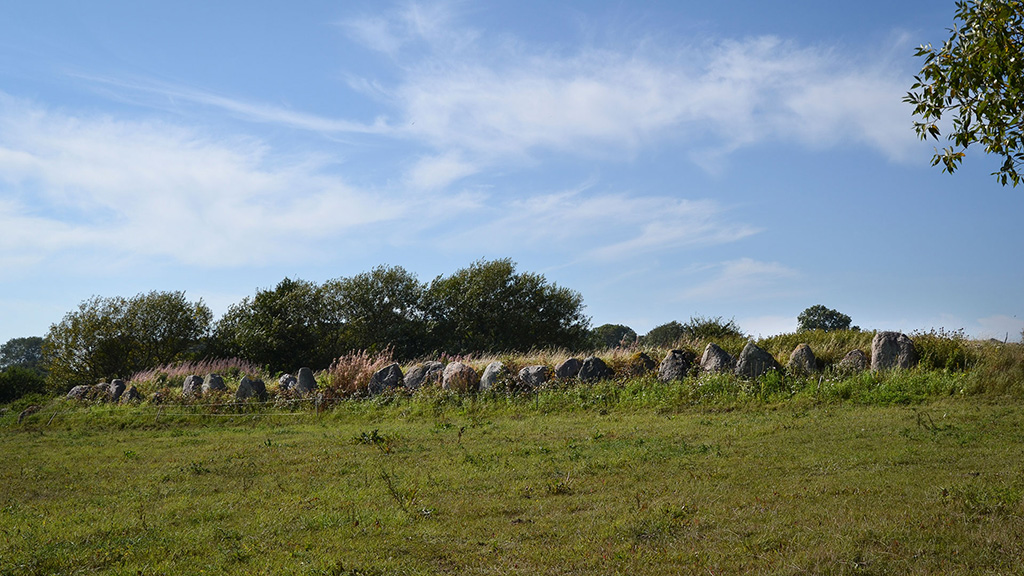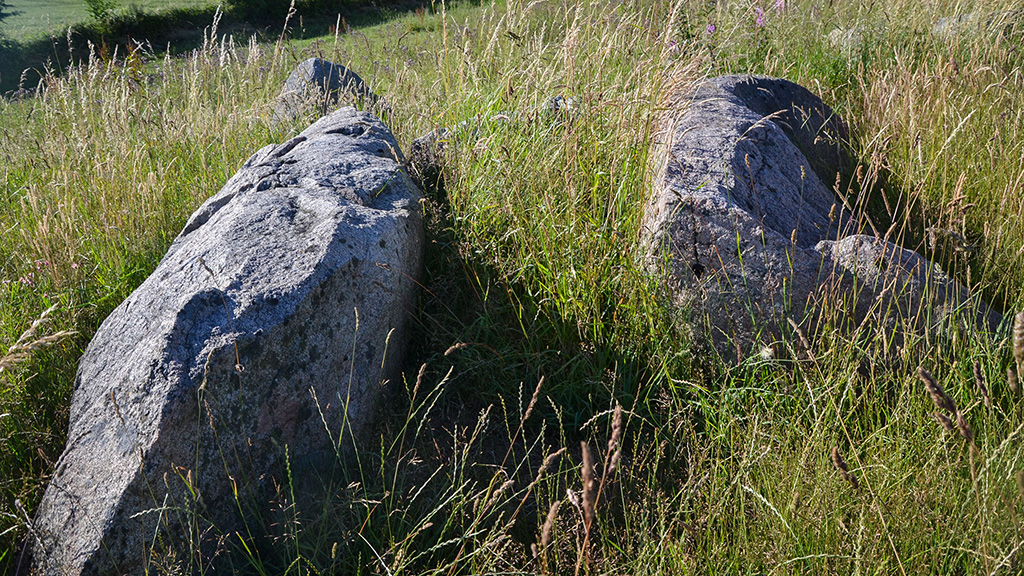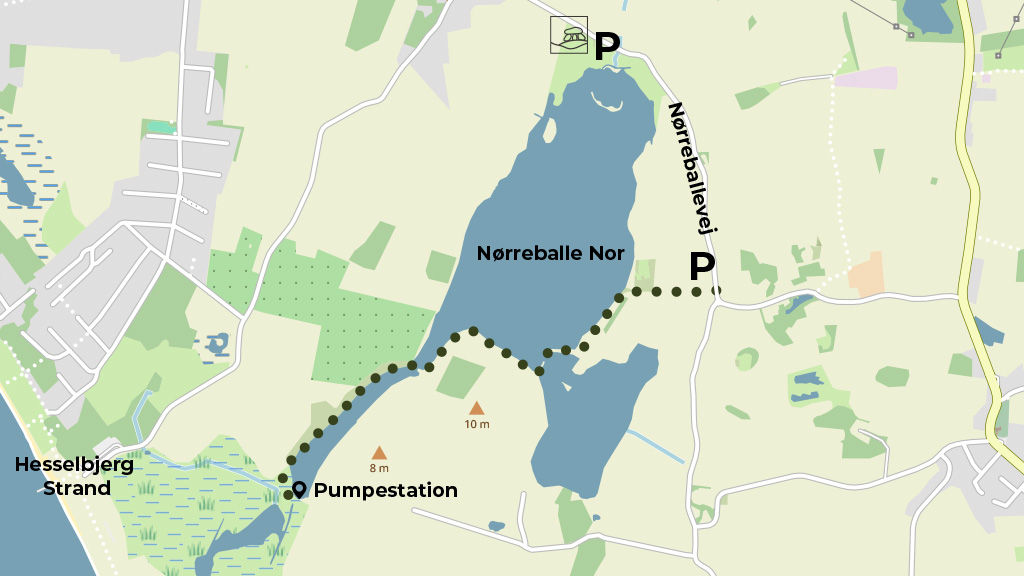
Long dolmen at Nørreballe Inlet
Immerse yourself in the mysteries of the Stone Age in the beautiful nature of Nørreballe Inlet.
The long dolmens were built at the beginning of the Neolithic Age, between 3800 and 3200 BC. Archaeologists still debate whether the dolmens were covered in soil or uncovered. But one thing is certain: the burials in and around the dolmens were accompanied by mysterious rituals, religious acts and deeply complicated burial practices.

The impressive row of kerb stones is over 40 meters long, but may have been even longer. As with many other ancient monuments on the island, some of the stones from the dolmen have been removed and used in neighbouring buildings. As early as 1875 the cap stone of the burial chamber was removed. The dolmen was officially registe-red in 1910 by agreement with the farm owner Peder Nielsen and has not been excavated or restored since.

The burial chamber is built of 3 large supporting stones and origi-nally had one single large stone as a ceiling. Archaeological research shows that Neolithic burial practices involved the deceased in many different rituals. Often the deceased was not placed in the grave until the body was completely skeletonised. Oftentimes only parts of the deceased were buried, the remaining bones presumably being used in other rituals.

Hiking at Nørreballe inlet
1 km south along Nørreballevej you can follow the path from the road down to Nørreballe inlet. Here you can enjoy a beautiful walk along the water and over bridges to the pumping station that used to drain the lake.
More Hidden Stories
Discover more hidden stories from Langeland at www.govisitlangeland.com/past
The project Langelands Hidden Stories is supported by the Danish Outdoor Council and developed by VisitLangeland and Langelands Museum.